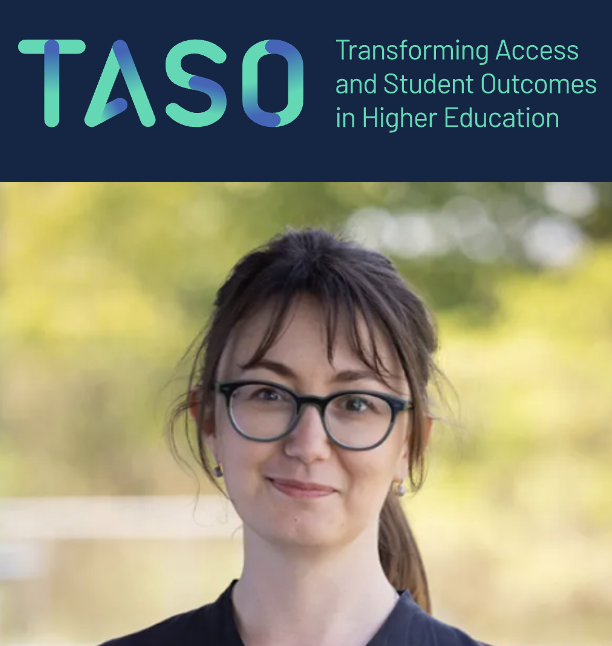Reflections from TASO on using QuIP in higher education
| 17 November 2025 | News
This is a guest blog written by Tatjana Damjanovic, Senior Research Officer at TASO.
In 2024, Transforming Access and Student Outcomes in Higher Education (TASO) commissioned Bath SDR to evaluate a wellbeing intervention at St. Mary’s University Twickenham. One of our roles as a What Works Centre, is to commission research and evaluation that tells us what works to support students from disadvantaged and underrepresented backgrounds to eliminate equality gaps. In sharing learning about what works, we are also deeply invested in helping the sector understand how certain interventions work.

In this project, we asked Bath SDR to evaluate an intervention that provided two types of drop-in sessions: gym sessions and painting sessions. Both aimed to provide students with social support and signposting to further academic or welfare support, thereby improving their wellbeing. The QuIP methodology enabled us to see the nuance in a complex intervention and help to inform future practice.
Mapping complexity
Like many interventions within big systems, those in the higher education sector can involve hidden complexities. They may have multiple entry points, or their eligibility criteria may vary in minor but significant ways. A key feature of the QuIP methodology is using causal mapping for analysis. Bath SDR use the Causal Mapping App, a unique qualitative data analysis tool that allows for qualitative data to be coded and visualised as a map. The maps helped us to understand quickly and easily how different actors, in slightly different contexts, understood how the wellbeing intervention worked for them. For example, the maps showed that for some students it was the activities themselves that they valued, while others valued the social connections.
To blindfold or not…
Another key feature of QuIP is using ‘blindfolding’, in which both the interviewers and the participants are told as little as possible about the research questions, and the topic of the intervention itself is not part of the interview schedule. Within evaluation in higher education, the problem of having a sample made up of already highly engaged participants is ever-present. Blindfolding was therefore an exciting prospect as these engaged students are more likely to be aware or guess the purposes of the evaluation.
However, the target sample of this evaluation were students who were struggling to engage with university, and the trusted staff they did engage with were those running the intervention. Therefore, we chose to add a ‘safety net’ question in the interview schedule that directly asked about the intervention. Recognising there are numerous and subtle factors that contribute to our wellbeing, the safety-net question ensured that we would directly capture something about the intervention and whether it related to students’ wellbeing.
Staying close to the ground
For this evaluation, Bath SDR used peer researchers that went through a carefully considered training to prepare them for data collection. The training covers interviewing techniques, writing summaries and causal mapping. You can read more about this in a blog post by one of the peer researchers.
From a commissioner perspective, involving peer researchers helped the evaluation stay close to the ground. They brought insights we could never access from behind a desk and reviewed the interview schedule, offering valuable feedback on the language and framing of the questions. In a sector that is rapidly evolving with new policies and resourcing challenges, interventions often have to adapt and change. Peer researchers played an important role in building connections between the evaluators, the intervention and the participants across the changing tides so common in higher education.
Final thoughts
Working with Bath SDR was both a pleasure and a privilege, and a first for TASO. Theory-based evaluations in higher education are less common than experimental methods but there is a growing appetite in the sector. Collaborating with Bath SDR has taught us just how rich this experience can be.
You can read more about the intervention and the details of the evaluation on our website. Keep an eye out for the upcoming technical report on this project, soon to be published on the TASO website. This project forms one half of a broader initiative on evaluating wellbeing interventions with small cohorts in higher education, the findings of which will be shared in our forthcoming synthesis report, also on the TASO website.



Comments are closed here.